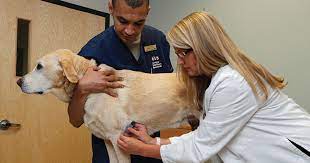Desexing pets is an important aspect of responsible pet ownership. It not only helps control the pet population but also provides numerous health and behavioural benefits for your furry companions. Many pet owners, however, have questions about the differences between spaying and neutering, the right age to perform these procedures, and how desexing affects behaviour. Let’s explore these topics in detail.
1. Difference Between Spaying and Neutering
Spaying and neutering are terms often used interchangeably, but they refer to slightly different procedures:
- Spaying: This procedure is performed on female animals and involves the removal of the ovaries and usually the uterus. Spaying prevents unwanted pregnancies and eliminates the heat cycle, which can cause behavioural changes such as restlessness or yowling in cats and dogs. Spaying also significantly reduces the risk of reproductive cancers and infections such as pyometra.
- Neutering: This term generally refers to the desexing of male animals, which involves the removal of the testicles. Neutering prevents unwanted litters and can reduce hormone-driven behaviours such as aggression, urine marking, and roaming in search of a mate. Neutering also lowers the risk of testicular cancer and some prostate problems.
In short, spaying is for females, neutering is for males, and both procedures are aimed at controlling reproduction while providing health benefits.
2. At What Age Should I Desex My Pet?
The ideal age for desexing can vary depending on the species, breed, and individual health of the pet:
- Dogs: Many veterinarians recommend desexing dogs between 6 to 12 months of age. Small breeds are often desexed closer to 6 months, while larger breeds may benefit from waiting until around 12 months to ensure proper bone growth.
- Cats: Cats can generally be desexed as early as 5 to 6 months of age, before they reach sexual maturity. Early desexing is effective in preventing unwanted litters and certain behavioural issues.
While early desexing is common, it’s essential to discuss the timing with your veterinarian, as factors like breed, health conditions, and lifestyle can influence the best age for your pet.
3. How Does Desexing Affect Pet Behaviour?
Desexing can influence a pet’s behaviour in several ways, primarily due to changes in hormone levels:
- Reduced Aggression: Many desexed pets show lower levels of hormone-driven aggression, making them calmer and easier to manage.
- Less Roaming: Intact animals often roam in search of mates. Desexing reduces this behaviour, which decreases the risk of accidents or getting lost.
- Decreased Marking: Male dogs and cats often mark their territory with urine. Neutering significantly reduces or eliminates this behaviour.
- Changes in Energy Levels: Some pets may become slightly less hyperactive after desexing, though this varies by individual.
- No Heat Behaviour in Females: Spaying eliminates the heat cycle, preventing behaviours like yowling, restlessness, and frequent urination during heat.
It’s important to note that while desexing can reduce undesirable behaviours, it is not a cure-all. Proper training, socialisation, and care are still essential for a well-behaved pet.
Conclusion
Desexing, through spaying or neutering, is a crucial step for responsible pet ownership. It prevents unwanted litters, reduces the risk of certain diseases, and can positively affect behaviour. The timing of desexing should be carefully considered, keeping in mind your pet’s age, breed, and health. While desexing can help manage aggression, roaming, and marking, it works best when combined with proper training and socialisation.
By understanding the differences between spaying and neutering, the optimal age for the procedure, and the behavioural impacts, pet owners can make informed decisions that enhance their pet’s health and overall wellbeing.





Comments